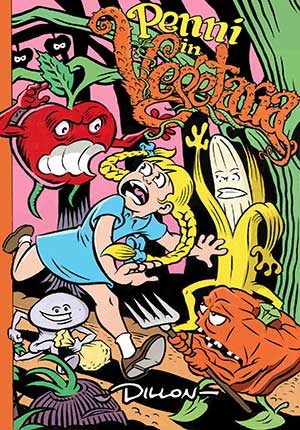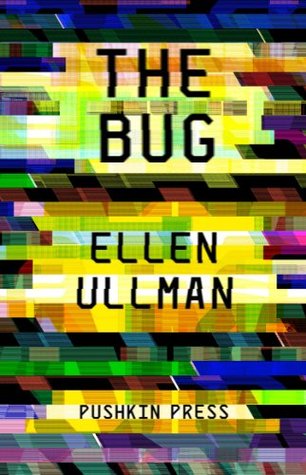 Dillon Naylor is an Australian comic artist, most remembered for Da’n’Dill, which I’m uncomfortable in my ability to pronounce. It’s the verbal equivalent of a missing stair.
Dillon Naylor is an Australian comic artist, most remembered for Da’n’Dill, which I’m uncomfortable in my ability to pronounce. It’s the verbal equivalent of a missing stair.
Da’n’Dill were endemic to Australia’s mid-90s landscape. They appeared in kids’ magazines such as K-Zone, in amusement park showbags, and were syndicated in newspapers. The comic was a disease, infesting every blank piece of paper you could name. Every kid I knew seemed to read them.
The concept was a riff on Mork and Mindy‘s “aliens in suburbia”, but Naylor correctly understood that humor doesn’t come from silliness, it comes from conflict, and he changed the Mindy character into a thin-skinned, teeth-grinding nerd who was constantly having his plans ruined by the dumb, well-meaning aliens.
Naylor’s comics were funny, and seemed even funnier when you were riding a sugar high on the train home from Luna Park. There are legends about casinos that hyper-oxygenate the air to induce euphoria (and compulsive gambling) in their patrons. Naylor had a similar racket going with the under-twelve set.
Penni in Vegetaria is another of Naylor’s works. The setup is as relatable as you can get: it’s dinner time, and Penni doesn’t want to eat her greens. She hides from her parents in a pile of leaves, discovers a spaceship, presses buttons, gets whisked away to a distant planet inhabited by sentient plants, and is soon caught up in a war between rival kingdoms of fruit and vegetables. I hate it when that happens.
The story is kid-friendly, and layered with moralistic overtones. It’s never in doubt that Penny will resolve the war, and will both learn and share some lessons along the way.
But there’s also that typical Naylor subversiveness: such as a visual gag involving a WWII-style internment camp (the detainees are tomatoes, because nobody’s sure what side they’re on!)
Naylor’s art is wonderfully grotesque and expressive. Australian writers (Paul Jennings, Morris Gleitzman, and Andy Griffiths) have always excelled at making twisted and disturbing nightmare fuel that technically isn’t objectionable at all, and Penni in Vegetaria is no exception. Naylor’s specialty? Teeth. They’re huge and scary and jut out like tombstones in nearly every panel. It’s actually pretty frightening. I’ve never worried about being bitten by a comic before.
Penni in Vegetaria is printed on incredibly thin A4 pulp, which might be a result of pro-plant lobbying. It’s rather short and Naylor might have taken the concept further, if he’d had more pages (it’s a disappointment to see the fruit and vegetables fight each other with human weapons, rather than in some funny plant-based way. And I just know that Queen Broccoli was busy planning the Final Solution to the Tomato Problem.)
I’m not sure if there were more Tales from the Ovoid, or whether there’s any connection to the Da’n’Dill universe. Memory tells me that Penni is the sister of the aforementioned nerd, but a re-read revealed that this isn’t true. I also learned that only Da is an alien, whereas Dill is only a mutated parrot. It’s important to know these things.
Although it’s not quite “cult classic” status yet, Penni in Vegetaria is a neat comic, and well worth tracking down. Luna Park closed in the middle of the 90s, but then came back. Naylor’s work is overdue for a similar renaissance.
No Comments »
 Mary Shelley wrote a novel called Frankenstein, about a creation overpowering its creator. Unknowingly, she lived out the drama of her story – nothing else she wrote achieved the same fame, and her entire existence is a footnote to Victor Frankenstein. One day, Mary Shelley’s name will be spoken for the last time. Some other day afterwards, Frankenstein’s name will be spoken for the last time. The interval in between might be thousands of years.
Mary Shelley wrote a novel called Frankenstein, about a creation overpowering its creator. Unknowingly, she lived out the drama of her story – nothing else she wrote achieved the same fame, and her entire existence is a footnote to Victor Frankenstein. One day, Mary Shelley’s name will be spoken for the last time. Some other day afterwards, Frankenstein’s name will be spoken for the last time. The interval in between might be thousands of years.
Think of “Frankenstein’s monster” and what comes to mind? A shambling green Boris Karloff, with bolts sticking out of his neck? In the original book, the monster’s skin is yellow, and it has long black hair. The public’s conception of the monster changed with the years, to where it bears little resemblance to Mary Shelley’s creation.
It mutated. It evolved. Mary Shelley called it a monster. But perhaps in modern nomenclature it could be called a virus.
Ellen Ullman’s The Bug is a cyberpunk addendum to Frankenstein. A corporate programmer encounters a bug in his company’s software. This bug has a life of its own, resists his efforts to document and eradicate it, and cripples the program to the point of threatening the company’s big IPO.
At first, it’s called U-1017, as it’s the thousandth and seventeenth bug discovered in the program (although you’d think the programmers would use zero-indexing, making it U-1016). Then, matters become personal, and he calls it Jester. The fight against it takes on mythic proportions.
While he struggles against the bug, his personal life is falling to bits. His wife is unfaithful, the company is screwing him, and his neighbors play music too loud. His failure to defeat U-1017 feels like a referendum against his existence on Earth. Programming is literally the only thing he does. If he fails at that, then what’s left? He liberally comments his code with existential angst.
Ullman adds lots of interesting asides about programming, linguistics, and math. One of the book’s most interesting themes is Conway’s Game of Life: an x-y grid where cell-like automata live, breed, and die in accordance with simple rules. This is introduced as a parallel to corporate programming. There’s a brilliant typographical conceit where the beginning of each chapter contains an iteration of the Game. Clever though this is, it spoils the book. The reader can guess the ending after seeing the final iteration.
(John Horton Conway, by the way, is another Mary Shelley. The Game of Life is so visually intuitive and thought-provoking that it overshadows most of Conway’s other work, much of which he feels is more significant.)
The novel is set in 1984, the age of the Apple Macintosh and the IBM. A lot of bands like Van Halen and Quiet Riot are name-dropped. Women are described as having padded shoulders so frequently that it becomes like a tic. A book like The Bug could never have been written today. The programmer would have posted his code on StackExchange and gotten six solutions by his midmorning break.
The Bug evokes a pretty powerful response from modest ingredients. It’s fascinating, and emotionally affecting. And Ullman doesn’t cheat: we actually do learn the solution to the bug in the end.
No Comments »
 Paradox: a perfect sociopath would have a really good sense of empathy.
Paradox: a perfect sociopath would have a really good sense of empathy.
In CS Lewis’s The Screwtape Letters, a devil laments the fact that evil is crippled, unless it also contains a strain of good. Bill Maher expounded upon a similar point: the 9/11 hijackers were courageous. They wouldn’t have been able to fly a plane into a building otherwise.
I see a lot of “low-functioning sociopathy” in the world, where someone attempts shenanigans and fails because they don’t actually understand how normal humans think. To really fuck with someone, you’ve got to be one of them. Or at least, you have to be able to model the way they think. A sociopath with an intact theory of mind would be really dangerous.
Recently, there was a protest at Columbia University. A few people attempted to frame the protestors as pro-pedophilia by infiltrating their ranks and holding up a “NO PEDO BASHING” banner.
The trouble is, actual pedophiles never never refer to themselves as “pedos”. The word is used as a pejorative. They instead use words like “boylove” and “hebephilia”.
The most visible of such organisations is the North American Man/Boy Love Association, or NAMBLA. A Google search for “pedo”/”paedo” retrieves just seven results (out of 161 total pages) on their website, all of which are either quotes from other people, sarcastic gestures towards the media’s “pedo-hysteria”, or furious negation that the term applies to them.
A pedophile group with a “no pedo bashing” banner is about as believable as an anti-racist group with a “no nigger bashing” banner .
It’s a plant. An obvious plant, unless you’re stupid, or pretending to be stupid. The banner itself is large and attractive, with lots of colours. It’s the best banner at the protest, from what I can see. Someone spent money printing it. Too bad that it’s a sign that nobody actually holding pro-pedophilia views would write.
(Do you imagine that when the sociopath showed the banner to his friends, a couple of them thought “it’s too obvious” but kept their views to themselves? I mean, what benighted soul would chime in with “it should say ‘no boylove bashing'”? You’d be forever marked as “that guy who knows a lot about pedophilia.” It’s like how all men are required by law to mumble and get vague when talking about feminine hygiene products.)
Apparently, this was the same group of waterheads who planted that embarassingly fake Rape Melania sign at a protest outside a Trump International Hotel…angled perfectly towards the camera, even though the rest of the protestors are facing the opposite direction, at the hotel.
I’m torn. I mean, it’s a pretty ignoble thing to do…but since they’re so incompetent at it, maybe they should be encouraged?
(By theory of mind, I mean the one Sally-Anne False-Belief ability that we gain at around four years of age. Tell a child this story: Tweedledee puts a marble in a box and leaves the room. Then Tweedledum enters the room, takes the marble out of the box, and puts it in his left pocket. Tweedledee now wants his marble. Where will he look for it? If the child is three or younger, they will answer “in Tweedledum’s left pocket!” Only as they mature do they realise that although they they know the marble’s correct location, Tweedledee thinks it’s still in the box. Of course, maybe Tweedledee heard Tweedledum enter the room, knows that he likes to steal marbles, and furthermore, knows that he is left handed. In that case, you might expect him to check Tweedledum’s left pocket first. Your theory of mind must reason two levels deep: Tweedledee’s mind -> Tweedledum’s mind -> reality. Or suppose Tweedledum is sneaky and puts the marble in his right pocket to confound expectations. You’re now three levels deep: Tweedledum’s mind -> Tweedledee’s mind -> Tweedledum’s mind -> reality. This can be carried forward an infinite number of steps, minds mirroring minds, until the test subject reaches the end of their ability.)
No Comments »
 Dillon Naylor is an Australian comic artist, most remembered for Da’n’Dill, which I’m uncomfortable in my ability to pronounce. It’s the verbal equivalent of a missing stair.
Dillon Naylor is an Australian comic artist, most remembered for Da’n’Dill, which I’m uncomfortable in my ability to pronounce. It’s the verbal equivalent of a missing stair.

